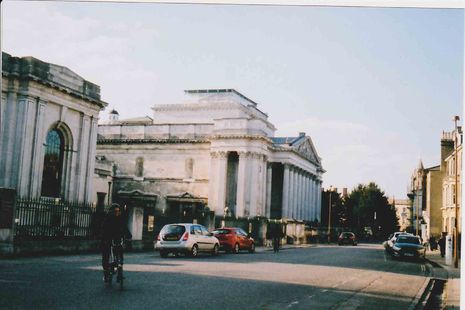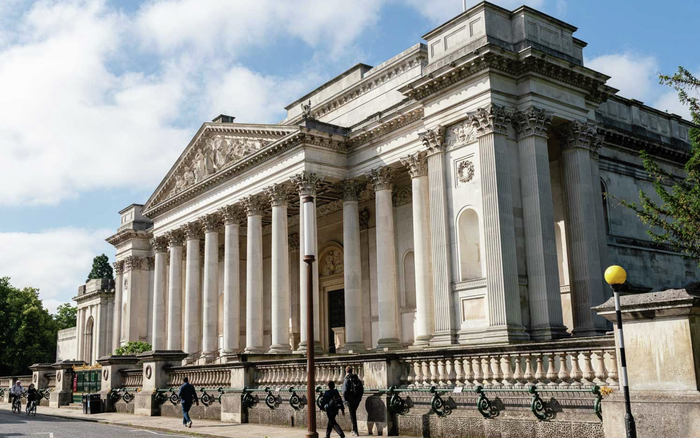Varsity investigates: Cambridge’s museums in lockdown
University museums may be closed to the public, but they continue to look after their collections

Since the start of the UK’s third national lockdown on 4th January, museums have been closed to visitors. But they are not closed for business: work to preserve the valuable objects inside continues.
“Conservation is always a balance between access to the collections and preservation of the collections - there is no point in having one without the other,” Helena Rodwell, a conservator at the Fitzwilliam Museum, told Varsity.
She continued: “During the lockdown, the scales have tipped a bit more toward the preservation side. Nevertheless, it is all in the anticipation of making the collections physically accessible again.”
The Fitzwilliam is the most notable of the University’s museums, housing a collection of over half a million works of art and historical artefacts. The museum was founded in 1816 by Richard, Viscount Fitzwilliam, an alumnus of Trinity Hall.
Julie Dawson, Head of Conservation at the Museum, explained to Varsity that, due to the requirement “to keep numbers of staff to an absolute minimum”, work “has been restricted to key essential activities”.
Despite this, Dawson says “conservators and technicians go into the building once a week to check on the condition of the collections. We are split into two discrete teams with specialists for each type of material in each.”
“When the lockdown eases a bit we hope to be in the Museum rather more often, to undertake, as we did last summer, some more detailed updating of our condition documentation and to make sure that the collections are ready for the return of our visitors.”
Lockdown also has its advantages, according to Rodwell. The decrease in “footfall in the building” has made it easier to maintain an environment suitable for preserving the collections. Even though pests would normally “thrive in areas of the building that are undisturbed”, they have been easier to contain due to the cold weather.
Rodwell explained: “Our chilliest gallery at the moment is about 11°C which is good for preservation but would not usually be possible.
“Also, fewer people usually means less dust, therefore less dusting! Dust can cause damage to a material's surface and the process of removing dust has the potential to cause damage through micro-abrasion of the surface and accidental damage. The less dusting we have to do, the better.”
Meanwhile, at the Museum of Archaeology and Anthropology (MAA), staff have also been “monitoring the environmental conditions” and “regularly inspecting the collections”. The MAA’s collection documents human history and culture around the world, from prehistory to the present day.
Staff at the museum told Varsity: “Any objects identified as needing conservation have been assessed and conservation work will resume when the lockdown eases and it is safe for staff to be on-site.”
In October “extensive conservation work” was carried out on a stone screen, which was damaged during the second lockdown. The screen was originally installed in Winchester Cathedral, and was designed by architect Inigo Jones.
In addition to their permanent collections, both the MAA and the Fitzwilliam have an extensive programme of exhibitions which has been disrupted by the pandemic.
“It has been very difficult to have a stable exhibition schedule in our currently unstable world,” David Evans, Exhibitions Manager at the Fitzwilliam, told Varsity. He also described the “knock-on effect” of this disruption on their temporary exhibition schedule.
He added: “With social distancing and other Covid protocols in place, we built and installed our exhibition The Human Touch ready to open on 6th January 2021. The lockdown was announced days before opening and we have had to reschedule the exhibition opening and the public programme.
“We programme up to five years in advance, and exhibitions are complex projects with many stakeholders and big international teams. Thankfully everyone we rely on has been understanding and supportive of our ever-adapting plans.”
The exhibits for The Human Touch are still in place, and for Dawson “it is a highlight of the week to undertake a slow meander round looking carefully at each and every item in the show”.
“There are many extraordinary books and manuscripts and also some objects made of complex mixtures of materials. Many of these are on loan to us and all can be quite reactive to changes in environmental conditions,” she explained.
Meanwhile, after the second national lockdown, staff at the MAA were able to open a student-led exhibition narrating how the rituals and religion of the Asmat people of Paupa, in Indonesia, impacted Catholic practices. Although the exhibition was “scaled down following Covid restrictions” and the later reinstatement of a national lockdown, an online tour was subsequently made available.
The museum’s educational programmes have also moved online, with formal provisions for schools and more informal ones directed towards families.
These online services also include the ‘Twilight at Home’ series, in which several of Cambridge’s museums have provided interactive and informative activities directed at younger children.
Miranda Stearn, Head of Learning at the Fitzwilliam Museum, emphasised that “continuing to serve the communities we are part of has been a priority throughout lockdown”. She went on to describe the remote learning provisions and activities launched by the Museum, which were intended “to meet the needs of a wide range of audiences.”
The ‘Look Think Do’ series, aimed at primary school age children, has been used by local schools, in conjunction with 500 community activity packs which the Museum has distributed through community partners and food banks to families who may be less digitally connected or may not have access to creative materials at home.
Stearn added that this “period has been about thinking together about what we are able to do well and safely to keep to ensure people can still benefit from the amazing collections we look after, and to consider how the pandemic can act as a catalyst for change enabling us to develop new ways of connecting with people.”
 Comment / Plastic pubs: the problem with Cambridge alehouses 5 January 2026
Comment / Plastic pubs: the problem with Cambridge alehouses 5 January 2026 News / Cambridge businesses concerned infrastructure delays will hurt growth5 January 2026
News / Cambridge businesses concerned infrastructure delays will hurt growth5 January 2026 News / Cambridge academics stand out in King’s 2026 Honours List2 January 2026
News / Cambridge academics stand out in King’s 2026 Honours List2 January 2026 News / AstraZeneca sues for £32 million over faulty construction at Cambridge Campus31 December 2025
News / AstraZeneca sues for £32 million over faulty construction at Cambridge Campus31 December 2025 Interviews / You don’t need to peak at Cambridge, says Robin Harding31 December 2025
Interviews / You don’t need to peak at Cambridge, says Robin Harding31 December 2025











